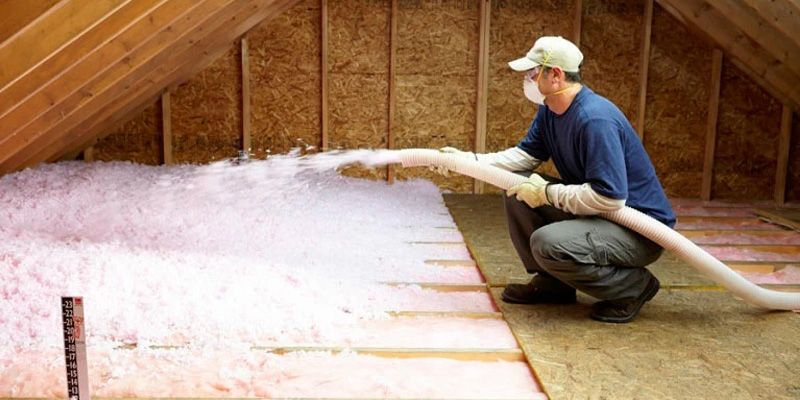What Is the Right Insulation for an Attic: Faced or Unfaced?

Air migrates from warmer spaces toward colder spaces, and insulation is designed to help prevent or at least slow that migration. Facing is a thin layer of paper or plastic attached to one side of batting insulation, which is sold in a roll. Whether you choose faced or unfaced insulation for the attic depends on the application and whether some insulation already is present.
Creating a Moisture Barrier
As a result of evaporation, people breathing and plant respiration, air carries some moisture with it. Should those water droplets get caught in the folds of insulation, it could lead to mold or mildew. Excessive moisture over long periods of time can rot the framing lumber that makes up the home’s structure. Trapped moisture also can damage the loft of the insulation. Loft is the thickness of batting insulation, and it helps define the R-value of the material. Facing creates a barrier through which moisture does not travel. Whether it is made from paper or plastic, it always faces whichever space is typically warmest in winter.
Insulating Attic Floors
Unfinished or uninsulated attics need a layer of protection against air migration. Install batting between the attic’s floor joists. The batting material must be faced, and at least as thick as the joists are wide so the batting is nearly flush with the top of the joists. Since the attic floor actually is the ceiling of the living space below, the facing installs against the top of the ceiling drywall or plaster. That way, it provides a layer of moisture protection between the living space below and the insulation material above.
Insulating Between Rafters
Install batting between the roof rafters for finished attic spaces. You can use either faced or unfaced batting for this installation. When using insulation that has either paper or plastic facing, that moisture barrier faces outward, toward the attic space. Even if the attic space is unheated, it typically is warmer than the outside air in winter. When choosing unfaced batting insulation for rafters, you must staple sheets of plastic over the batting to accomplish the necessary moisture barrier. Air movement is critical in the attic so moisture moves outside the home. Install baffles against the roof sheathing between rafters so insulation does not seal up these avenues of air circulation.
Adding More Insulation
Some attic floors that already have a layer of insulation could benefit from an additional application over the existing layer. The extra batting increases R-values, so it further slows warm air migration. This additional layer must be unfaced batting material; otherwise, moisture could get trapped between the layers of insulation and cause mold, mildew and wood rot problems. Roll out the second layer so it installs perpendicular to the attic floor joists and the existing insulation between them.
If you're not sure on what insulation is right for your attic be sure to give us a call on 01295 565565 or click here!